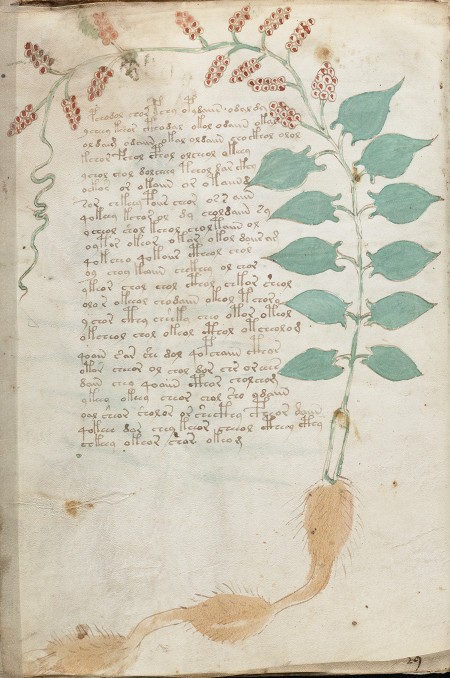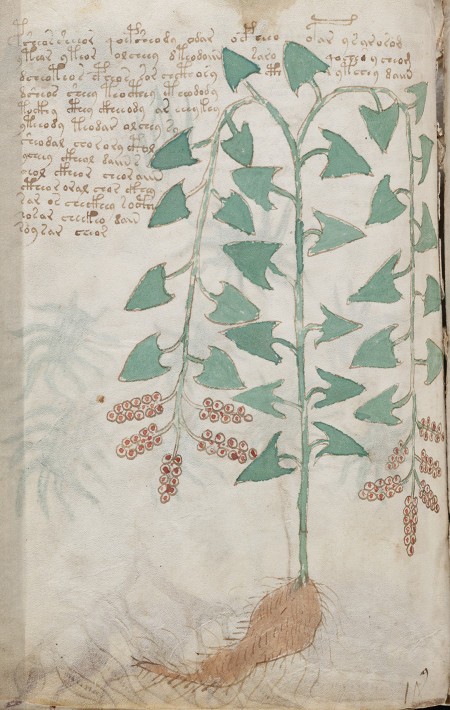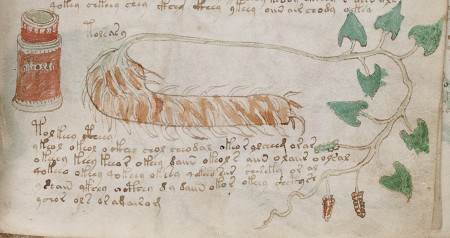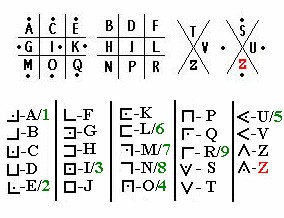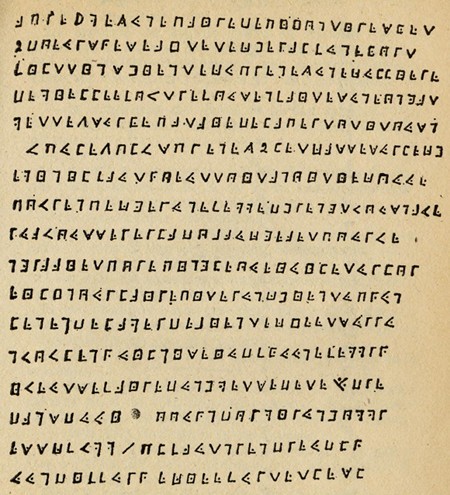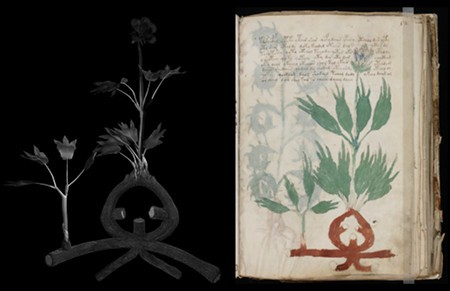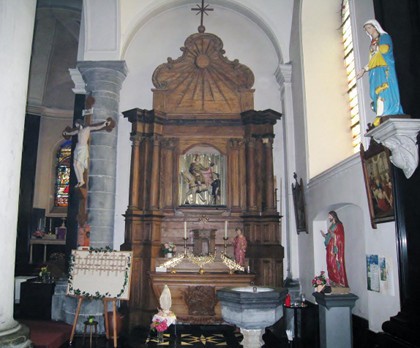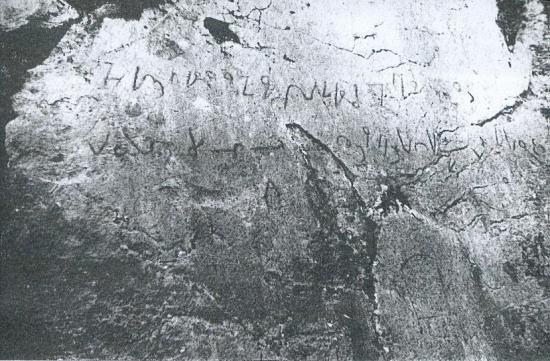The Voynich Manuscript is a dismal reality TV channel, where every participant’s ten minutes of fame segues quickly into an eternity of opprobrium: few people dipping their feet into its toxic slurry get to keep all their toes for very long. I’m sorry to have to say such a thing, but as the modern philosophers Run and DMC put it, “it’s like that, and that’s the way it is“.
All of which is a long-winded way of saying that, somewhat surprisingly (at least to me), Gordon Rugg has this week returned to the Voynich’s rancid riverside with a fresh supply of podalic digits for dunking. But this time around he’s appropriating its mysteries not to promote the claimed benefits of his “Verifier Method” (a meme which seems not to have taken root), but to promote his newly-patented toy for 2013, that he somewhat grandly calls the Search Visualizer (rather as if he’s inventing a whole new field).
Yet unless I’ve misunderstood it significantly, all the Search Visualizer actually does is:
* draw a rectangle representing an input document
* draw dots on it wherever one of a user-defined set of syllables or words appears, with each dot a different colour.
Thus a SV user can, for example, map out that ‘witch’ and ‘sleep’ appear in different clusters within Macbeth. So far, so facile.
Nonetheless, I (perhaps) hear you ask eagerly, what can the Search Visualizer teach us about – dan dan darrrr – the Voynich Manuscript? Unsurprisingly (given the amount of exposure his Voynich claims gave the Verifier Method all those years ago), that’s the subject of this week’s blog post from him.
Having used SV to draw a lot of diagrams of (in the EVA transcription) “daiin”, “qo”, “dy”, and “ol”, Rugg concludes from the “banding” (basically, section structure) visible in those diagrams that…
It’s completely inconsistent with the theory that Voynichese is a single unidentified language, or with the theory that Voynichese consists of two dialects of a single unidentified language.
If we’re looking at dialects, then there are at least six of them, and some appear to be more different from each other than English is from German, at least on the preliminary results from my work so far (I looked at other German texts, and saw the same distribution patterns as in the book example above).
If we’re looking at a coded text, then there appear to be at least half a dozen different versions of the code, or at least half a dozen different codes producing similar but not identical types of text.
Of course, the main person who failed to grasp that the whole Currier-A-&-B-languages things wasn’t anything like a binary either-or (despite Rene & I telling him several times, as I recall) was, errrm, Gordon Rugg himself. So this is, unusually, a straw man argument where the straw man is the researcher himself (but 9 years in the past).
Anyway, even though his “Verifier Method” (in my opinion) falls well short of David Hackett Fisher’s splendid book “Historians’ Fallacies”, let’s apply it to the Search Visualizer:-
1. Accumulate knowledge of a discipline through interviews and reading.
I’ve read the article and most of his website, too. I’m an IT professional and a computer scientist. I can see what he’s doing: rectangles and coloured dots.
2. Determine whether critical expertise has yet to be applied in the field.
As far as the Voynich Manuscript goes, I don’t see any reference to:-
* codicology (though he’s added an addendum noting that the order of the pages may be wrong in “some cases”, this clearly isn’t reflected in his conclusions, which are almost entirely about the whole “banding” and “sub-banding” thing)
* Prescott Currier’s famous analysis (A pages, B pages, but plenty of intermediate ‘dialects’ too) isn’t mentioned once. That’s right, not once. Anywhere.
* statistical analyses carried out by researchers other than Gordon Rugg or his students.
Sorry, but that seems like a very uncritical, self-contained way of working.
I would add that I don’t see a lot of critical expertise being applied to historical cryptography: what instead appears seems to be a partial rendering of the history to support previously held positions.
3. Look for bias and mistakenly held assumptions in the research.
There’s plenty of bias towards his grille method, as well as naysaying against mainstream historical cryptography (which, let’s remember, he is trying to rewrite to support his particular story).
There’s also bias towards his 16th century dating in the face of fairly rock-solid scientific, art history, codicological, and palaeographic dating to the start/middle of the 15th century, which doesn’t really appear in his presentation.
4.Analyze jargon to uncover differing definitions of key terms.
What Rugg calls “Search Visualization” (drawing a rectangle of coloured dots) surely seems rather a low-grade kind of search. The point about “search” (in the Google sense) is surely that it finds things you didn’t previously know about and includes filters that promote relevance: whereas feeding pre-determined syllables and drawing coloured dots in a rectangle is only barely pattern-matching, and only barely visualization.
5. Check for classic mistakes using human-error tools.
* Using an outdated transcription
* Not filtering out all the embedded comments (is there a better explanation for this than sheer laziness?)
* Relying on computer science alone without integrating genuine historical research
* Arguing from possibility rather from probability or fact
* Not responding to criticism from actual domain experts
6. Follow the errors as they ripple through underlying assumptions.
(Too boring to do if so many mistakes have been identified in steps 1-5.)
7. Suggest new avenues for research that emerge from steps one through six.
Surely a proper academic would be building a tool that would find telling letter clusters for you from an input text, using Hidden Markov Models and all kinds of proper statistical mechanisms? Shouldn’t something like the Search Visualizer be about finding things you don’t already know about, and only then helping you visualize them?
All in all, I find it extraordinarily hard not to get cross about this, because Rugg seems to be exactly reprising what he did all those years ago, once again at the cost of the whole research area. And once again, his driving force appears to be “ask not what you can do for the Voynich Manuscript, ask what it can do for you.” Sad, very sad.
